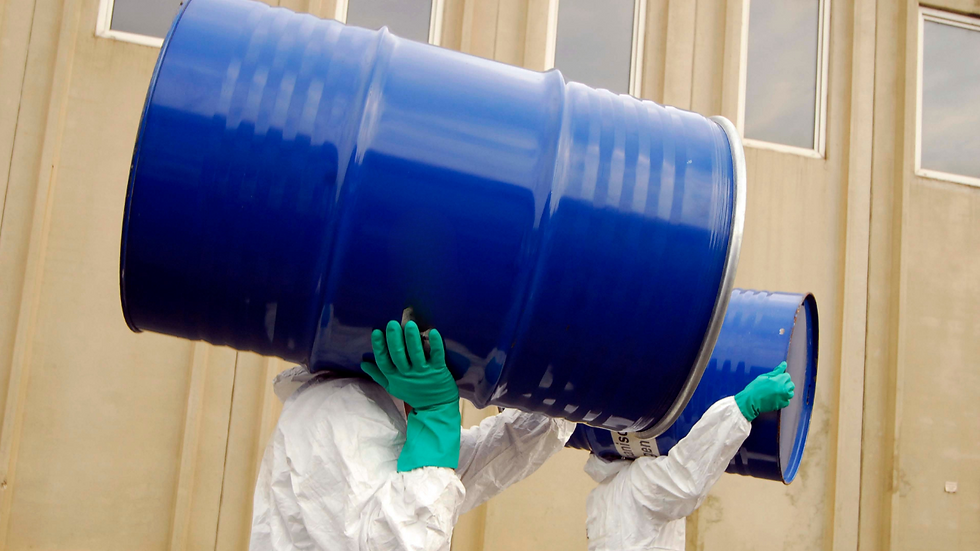Navigating the New EPA Methylene Chloride Regulation
- Shane Stewart

- Jul 17
- 3 min read
What You Need to Know

In April 2024, the U.S. Environmental Protection Agency (EPA) finalized a comprehensive rule under the Toxic Substances Control Act (TSCA) to address the health risks associated with methylene chloride (also known as dichloromethane or DCM). This regulation significantly expands upon previous restrictions, aiming to protect workers and the public from the chemical's harmful effects.
Understanding the Previous Regulations
Prior to the 2024 rule, the EPA had taken steps to limit methylene chloride's use, notably:
2019 Ban on Consumer Paint Removers: The EPA prohibited the manufacture, import, and distribution of methylene chloride in paint and coating removers for consumer use.
OSHA Standards: The Occupational Safety and Health Administration (OSHA) set permissible exposure limits (PELs) for methylene chloride at 25 parts per million (ppm) over an 8-hour workday and 125 ppm over a 15-minute period.
Despite these measures, methylene chloride remained widely used in various industrial and commercial applications, leading to continued health concerns.
Key Changes in the 2024 EPA Regulation
The 2024 rule introduces several significant changes:
1. Expanded Prohibitions
Consumer Uses: All consumer uses of methylene chloride are now prohibited.
Industrial and Commercial Uses: Most industrial and commercial applications, including paint and coating removers, are banned. Exceptions are made for specific critical uses under strict conditions.
2. Workplace Chemical Protection Program (WCPP)
For the limited uses that remain permitted, the EPA mandates the implementation of a WCPP, which includes:
Stricter Exposure Limits: An 8-hour time-weighted average (TWA) exposure limit of 2 ppm and a 15-minute short-term exposure limit (STEL) of 16 ppm, significantly lower than OSHA's previous limits.
Exposure Monitoring: Regular monitoring of airborne concentrations to ensure compliance with the new limits.
Exposure Control Plans: Development and implementation of plans to reduce exposures below the established limits.
Recordkeeping and Notifications: Maintaining records of compliance and notifying downstream users of the prohibitions and requirements.
3. Compliance Timeline
The EPA has established a phased timeline for compliance:
Manufacturing and Importing: Prohibited after May 5, 2025.
Processing: Prohibited after August 1, 2025.
Distribution to Retailers: Prohibited after February 3, 2025.
Retail Sales: Prohibited after May 5, 2025.
Industrial and Commercial Use: Prohibited after April 28, 2026, with certain exceptions extending to May 8, 2029, for specific critical uses.
Implications for Stakeholders
Manufacturers and Importers
Entities involved in the manufacture or import of methylene chloride must cease these activities by the specified deadlines unless their use falls under the permitted exceptions with an approved WCPP in place.
Industrial and Commercial Users
Companies using methylene chloride in their operations must:
Assess Applicability: Determine if their use is among the permitted exceptions.
Implement WCPP: Develop and enforce a WCPP to comply with the new exposure limits and safety requirements.
Seek Alternatives: Explore and transition to safer alternative chemicals or processes where feasible.
Laboratories and Research Institutions
Laboratories using methylene chloride for research purposes are permitted to continue its use under the WCPP. They must:
Conduct Exposure Monitoring: Regularly monitor airborne concentrations of methylene chloride.
Maintain Records: Keep detailed records of usage, monitoring results, and safety measures implemented.
Evaluate Alternatives: Consider substituting methylene chloride with less hazardous substances when possible.
Conclusion
The EPA's 2024 regulation marks a significant shift in the control of methylene chloride, aiming to mitigate the health risks associated with its use. Stakeholders must understand the new requirements, assess their operations for compliance, and take proactive steps to align with the regulation.
For detailed information and guidance, refer to the EPA's official resources:
By staying informed and compliant, organizations can ensure the safety of their workers and the public while navigating the changes brought by this critical regulation.
Have more questions? Reach out to us at Safety-Chat and see how you can stay compliant.






Comments